Prevent Russet mites with DNA based screening
Introduction
The microscopic
Hemp Russet mite infects cannabis and can result in significant crop loss and chronic infestations. McPartland and Hillig published an excellent review on Hemp Russet mites in 2003. Russet mites are 200um x 45um and are thus invisible to the eye until late infection when their numbers begin to discolor the plant. They are resistant to most
pest treatments and thus care must be taken to screen incoming material to a grow. Visual detection of mature mites is possible with 14X objective loupe but eggs and nymphs likely escape convenient optical detection. They are believed to be hosts for other plant viruses.
Early detection with youPCR could assist in screening clones or soils to prevent infections of larger grows. The Russet mite Genome has not been sequenced as of 2017. In order to design a youPCR assay to detect Russet mites on Cannabis, we shotgun sequenced a collection of Russet mites sourced from Massachusetts.
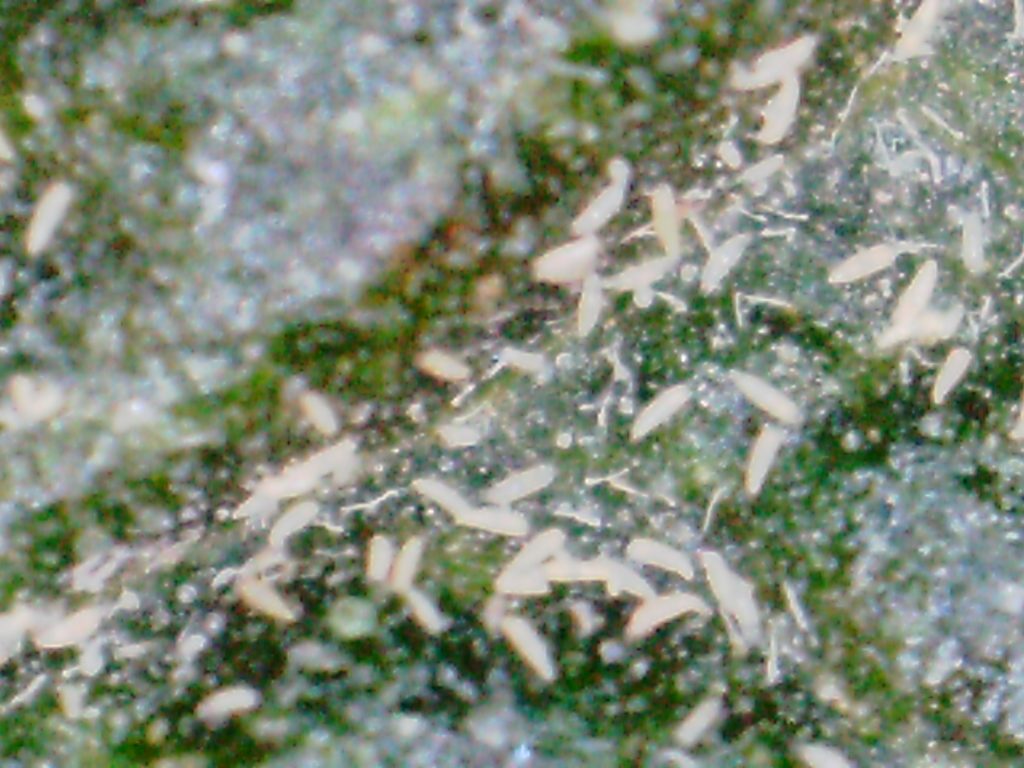
Active Russet Mites under optical magnification

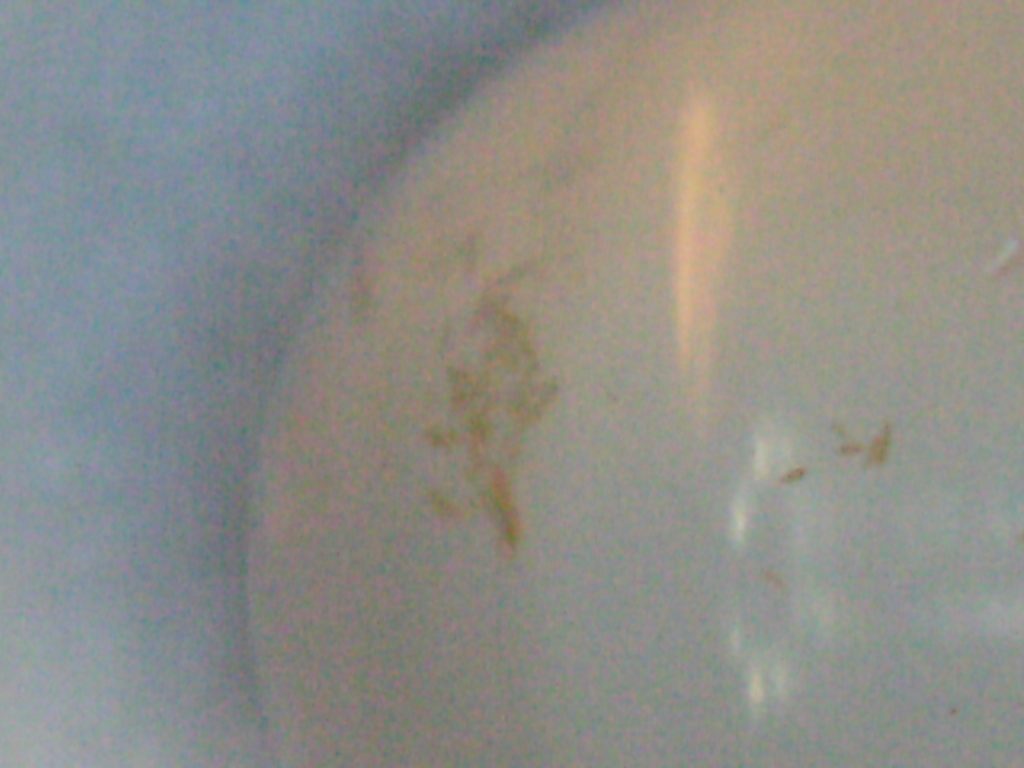
Harvesting Russet mites with centrifugation can be tricky given their similar size to trichomes.
DNA was purified from Mites with the MGC food/MIP DNA purification protocol. 0.2ng/ul in 20ul was eluted from Magnetic particles. Nextera Library preparation was performed for Illumina Sequencing.
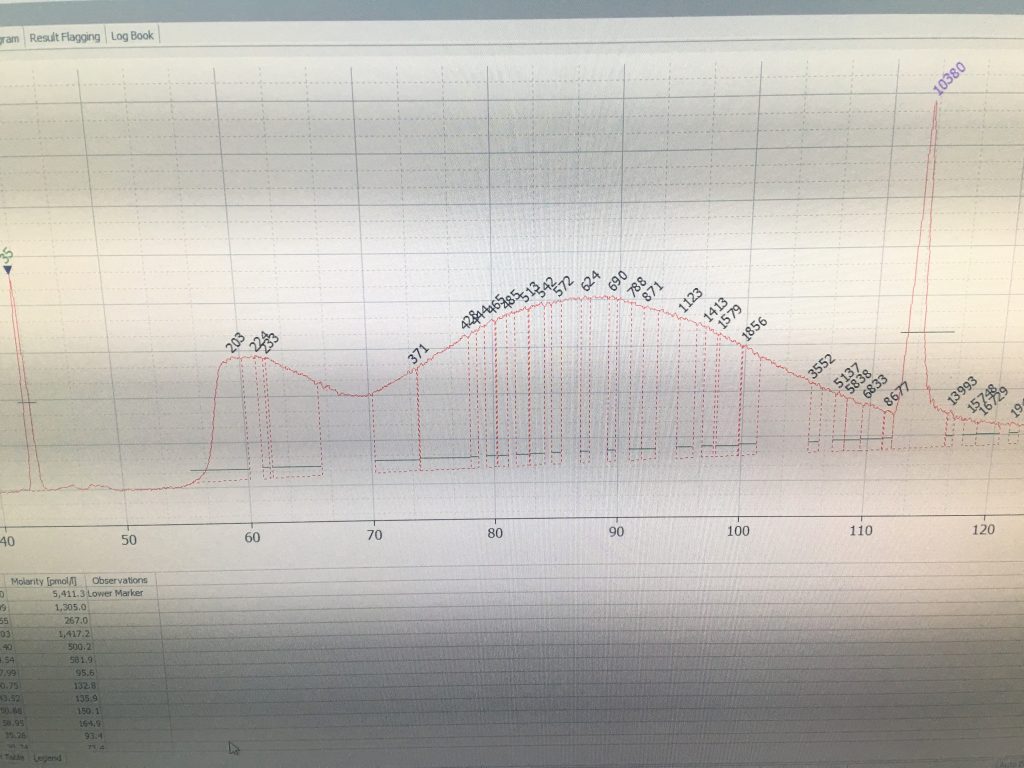
DNA library was constructed from 2ng of DNA purified using the MGC MIP and Extract DNA purification protocol.
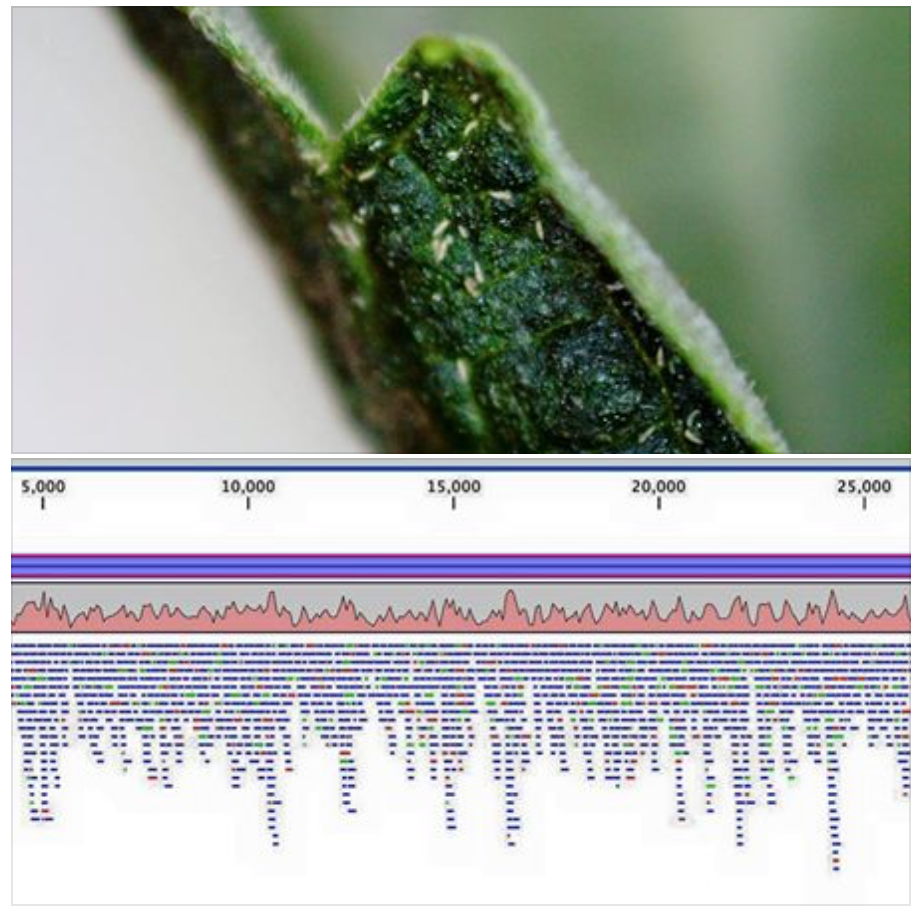
A draft 40Mb genome presented several high copy contigs that enabled selection of youPCR primers. These primers are then screened against a library of known endophytes to demonstrate no cross reactivity with other commonly found microbes on Cannabis.
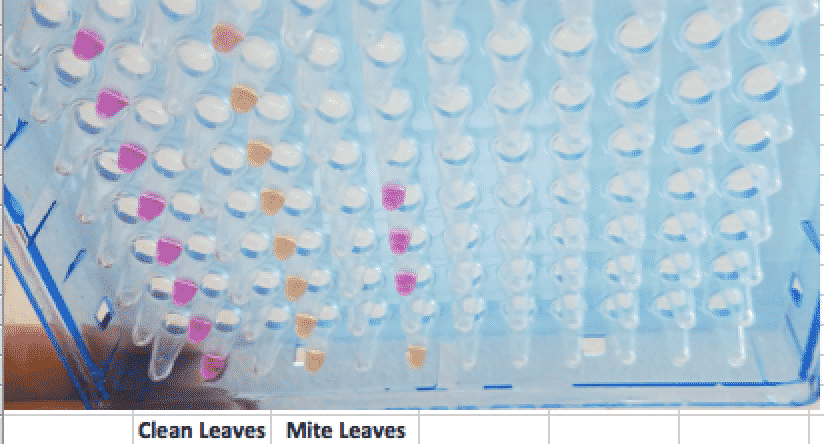
Russet mites have 2 stages of their life cycle which present as eggs and nymphs. These are even harder to visually detect with a loupe but present plenty of DNA for a youPCR assay. To increase the sensitivity of the test we selected a unique high copy (N=50) region of the genome such that single cells and single eggs will provide over 50 targets for youPCR. This sensitivity is important given McPartland and Hillig’s description of the challenges one faces in exterminating mites.
Proactive versus Reactive planning
For regulatory reasons, many states are mandating indoor cannabis grows. A recent study of indoor
Belgium cannabis grows found 72% of them had pesticides onsite while 64% of the flowers tested positive for unsafe levels of pesticides. These are expensive and unsafe reactionary measures to Cannabis pests. DNA screening is far safer and more responsible. The list of pesticides include mostly insecticides and fungicides. The conclusions from this paper imply OSHA will be knocking on the door of cannabis grows once they are more legal.
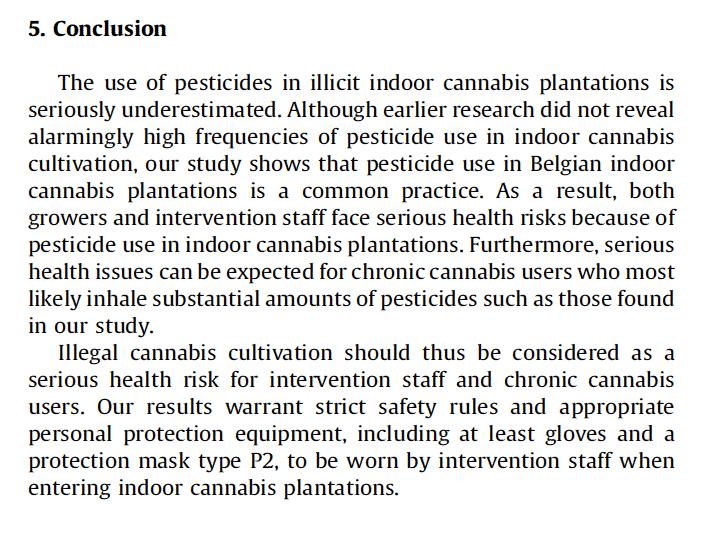
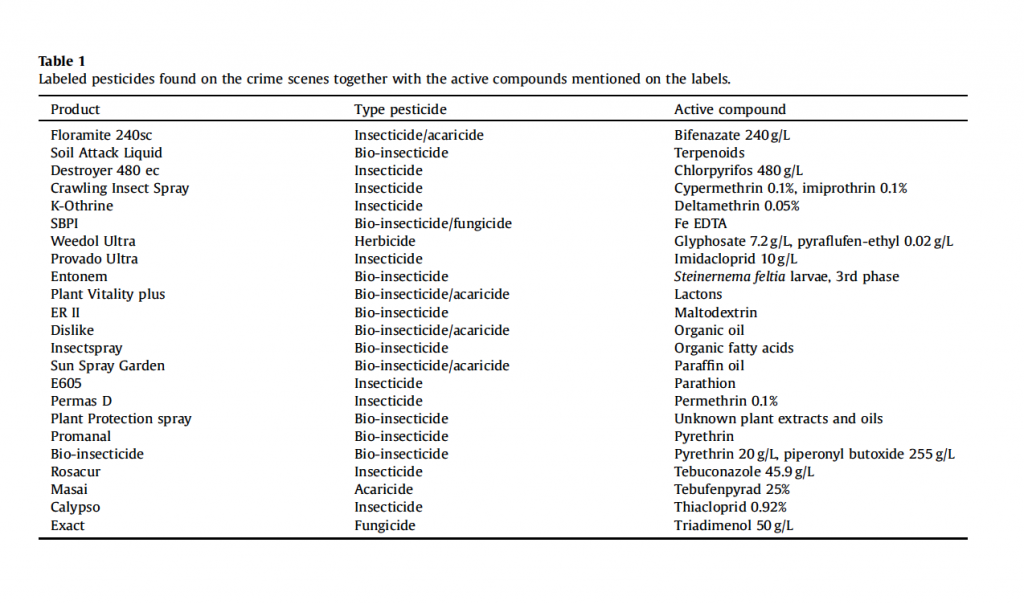
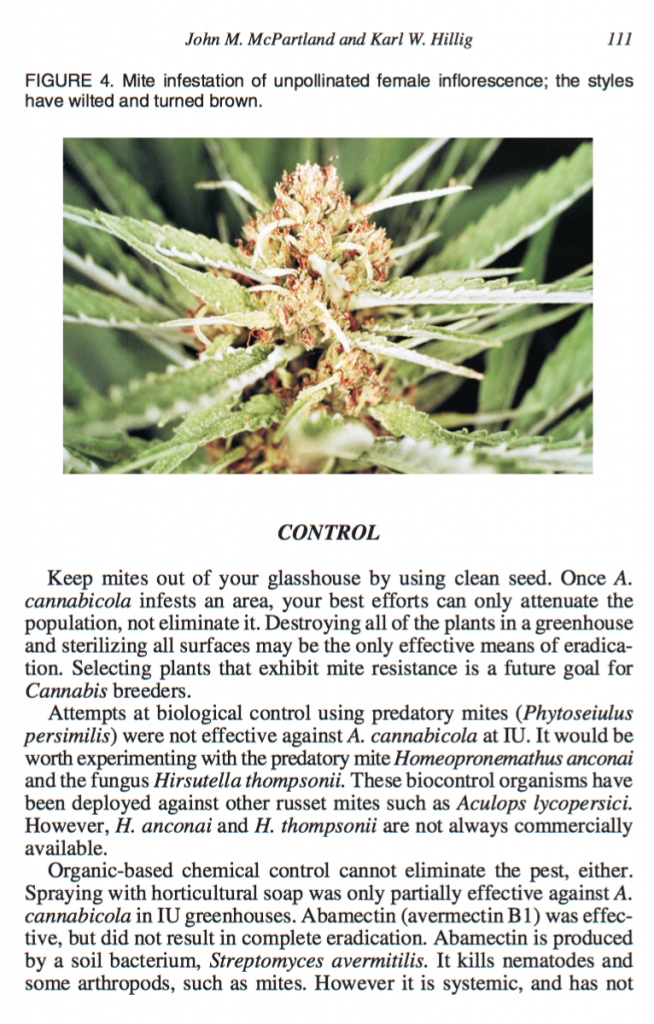
Conclusions
Hemp Russet mites are hard to kill and feed on trichomes. They destroy the value of a crop and induce a very large sterilization burden once biologically magnified with their replicative cycle.
A recent study in Belgium showcased 64% of the grows tested positive for unsafe pesticides. Reactionary measures are more expensive and more risky than proactive DNA based testing. With sequencing of the Russet mite genome we now have mobile PCR tools than can be run off of a laptop or cell phone which can detect Powdery mildew and Russet mites. Other invisible pests can be easily added to this assay menu list.I
 DNA was purified from Mites with the MGC food/MIP DNA purification protocol. 0.2ng/ul in 20ul was eluted from Magnetic particles. Nextera Library preparation was performed for Illumina Sequencing.
DNA was purified from Mites with the MGC food/MIP DNA purification protocol. 0.2ng/ul in 20ul was eluted from Magnetic particles. Nextera Library preparation was performed for Illumina Sequencing.

 A draft 40Mb genome presented several high copy contigs that enabled selection of youPCR primers. These primers are then screened against a library of known endophytes to demonstrate no cross reactivity with other commonly found microbes on Cannabis.
A draft 40Mb genome presented several high copy contigs that enabled selection of youPCR primers. These primers are then screened against a library of known endophytes to demonstrate no cross reactivity with other commonly found microbes on Cannabis.
 Russet mites have 2 stages of their life cycle which present as eggs and nymphs. These are even harder to visually detect with a loupe but present plenty of DNA for a youPCR assay. To increase the sensitivity of the test we selected a unique high copy (N=50) region of the genome such that single cells and single eggs will provide over 50 targets for youPCR. This sensitivity is important given McPartland and Hillig’s description of the challenges one faces in exterminating mites.
Russet mites have 2 stages of their life cycle which present as eggs and nymphs. These are even harder to visually detect with a loupe but present plenty of DNA for a youPCR assay. To increase the sensitivity of the test we selected a unique high copy (N=50) region of the genome such that single cells and single eggs will provide over 50 targets for youPCR. This sensitivity is important given McPartland and Hillig’s description of the challenges one faces in exterminating mites.


